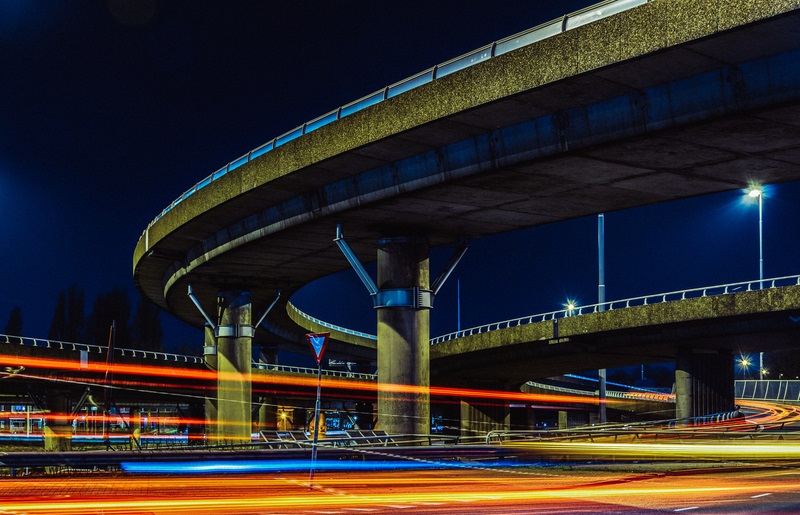
The New York City Connected Vehicle (CV) Pilot is the largest of its kind in the world, taking in parts of Manhattan and Brooklyn and comprising more than 3,000 cars, buses and fleet vehicles.
Cohda Wireless is involved in the initiative through the provision of its Vehicle to Everything (V2X) stack and applications and its V2X-Locate positioning solution. Dr Paul Alexander, Cohda’s chief technical officer, thinks large-scale pilots like this are the key to creating a tipping point for CVs.
However, he can’t say too much about it in specific terms: “It's certainly not an open book, unfortunately,” he explains apologetically, on a Zoom call from his home in Adelaide, Australia.
But he can talk about what V2X-Locate does.

“It’s a V2X system that delivers the typical collision-avoidance applications that V2X is designed to do,” he begins. “It does that in New York and why is that critical? New York is a very big, high rise situation - perhaps the biggest.”
In such a domain, the global navigation satellite systems (GNSS) upon which V2X is based can struggle. The Big Apple is “one of the toughest cities to get good accuracy”. That’s why it is important that V2X-Locate augments the GNSS by also using the roadside units (RSUs) which are deployed as part of city’s V2X system.
Thus, as well as ranging to the satellites, the car also ranges to the RSUs, around 100m or so apart.
“Our solution fuses together satellite-based ranging and RSU-based ranging into one complete positioning solution,” Alexander says. “In collision avoidance applications, time and accuracy are key, and that's where we really focus.”
The trials have shown lane-level accuracy at around 90%, which he describes as “very good”.
“That accuracy level is sufficient for V2X applications, such as collision warnings,” Alexander goes on. “The beauty of V2X is it sees around corners. We now have accurate collision avoidance on corners which is critical for a city use case.”
Urban canyons
From a positioning point of view, the city is still quite a challenge. “New York has the best urban canyons in the world!” Alexander laughs. But he points out that underground car parks can make things just as difficult.
“There's plenty of places where GNSS has a challenge: I guess New York is kind of the star of it all, but you don't need to have high rise or urban canyons to have a problem.”
Simple, small tunnels or underpasses beneath a spaghetti junction can screw things up just as effectively. “That's really where the value can be added… We've seen quite a number of cases in other cities around the world where simply driving under a ramp can cause a GNSS-based system to cause a few metres of error,” he continues.
“But all of that can be corrected if you augment the GNSS system with some terrestrial-based ranging. New York is just on a crazy scale - block after block after block of problems in terms of GNSS.”
Cohda has been involved in a number of trials across “tens of North American cities, tens of European cities and several in Asia”. CV deployments are coming, he says.
The company knows that, to succeed at scale, standard compliance is going to be vital. “Our customers are going to want to have a system that it's possible for there to be multiple sources, frankly,” he insists. “The automotive sector is not going to accept a single-source proprietary supply. It's just not going to happen.”
Some form of standardisation is therefore required. “It's kind of like saying: ‘what are the messages that are transmitted across between the vehicles, you need to tell cars how to transmit and talk to each other’,” Alexander goes on.
“The critical bit of this is that the RSUs need to advertise where they are [and what they can do]. So it's quite a low barrier to entry in terms of the standardisation but we do want to make sure that it is a repeatable and scalable solution.”

(© Brasilnut | Dreamstime.com)
He is confident that this can be achieved…which brings us on to the penetration of connectivity in vehicles on the road. “It's not as fast as we'd like,” he admits, while pointing out that Volkswagen and General Motors are already manufacturing at volume. He can’t quite foresee a time when every vehicle worldwide is connected.
“Globally, that's hard, [but] there’s going to be huge value if even 10% of the vehicles are connected globally.”
Pushed for a figure, he says: “Something north of 10% globally over 10 years would be roughly where I'd see it – that's probably conservative.”
He uses the analogy of the internet to describe the benefits of this: “When you connect computers you get something wonderful happening, whereas the computer sitting on the desk there - what can it do? So, the networking effect here is massive.”
He believes deployment will go “hand-in-hand with automation as well, so the automation timelines are probably related there, somehow, so each will influence the other”. And with automation, he points out: “The truth of it is that they are connected - they're downloading massive, massive amounts of data, so they’re connected anyway. There's plenty of value there.”
However, there is the not-so-small matter of the “technical wireless standard debates” to get over too, as competing V2X technologies DSRC and cellular-V2X (C-V2X) vie for supremacy in the world's automotive markets.
“It is what it is,” he shrugs. Cohda is ‘agnostic’ to either technology. But he still believes there is the danger of a trick being missed if this is not sorted out. While not wishing to be drawn on how the C-V2X versus DSRC competition might end, Alexander says: "I think one thing that's fairly obvious is that China will be a C-V2X world. So that's fairly plain. What's also true is that we have millions of VWs going out of the production line with DSRC ITS-G5 on them."
Missed opportunity
This creates a potential split across continents, he says. "What will be a pity to see will be some vehicles talking C-V2X and some vehicles that are talking ITS-G5 DSRC. And they won’t be able to see each other. That's just a missed opportunity."
He believes it will be possible to reconcile this to some extent - especially when it comes to safety.
"The first point is making sure they don't hurt each other," Alexander says. "So at the very least, it needs to be that both systems can be effective in the presence of each other, even though they're isolated from each other - and I think that can be sorted out."
But ultimately he thinks that the market should not be the final arbiter. "People talk about market forces sorting this out but I really think it's the regulators," he warns. "Regulators would like to say they don't want to specify technologies, but I do believe in this case it may be dangerous not to. The problem with that is the commercial implications of doing it by regulator - so this is not an easy situation to be in.”
From Cohda’s point of view, the debate has created some more work. “We can move our V2X stack across the platforms - we do that today with our products - but as a supplier into V2X, we want our customers to be able to use our stack on either standard so we've gone to the trouble of making, as others have, hardware capable for both,” he goes on.
Leaving the technical issues aside, what implications does it have for the rest of the global market if a market like China goes C-V2X? Alexander pauses. “It's a good question.”
Could North America, Europe and China/Asia, for example, move ahead with different technologies?
“Maybe we end up with three worlds in terms of the technologies that are in play,” he finally muses. “From our point of view, it should still be true that the software is the same at a sufficiently high level.”
We could therefore see a “two- or three-way split across the ITS connected vehicle standards”. Safety would not be an obvious problem because vehicles would be on their own ‘island’ together.
“Where the problems would come is in certain markets where there was a mixture of the two in one city,” he thinks.
“At the moment we don't have a possibility of mixed - I can't see how that would be allowed by the regulators. That said, people are working and trying to figure out how to make this - as I said - at least not damage each other. Which is something - it will still be better than not doing it. It's a very complex and long debate: it's market forces, it’s lots of moving parts and there's other players in there as well just to make it more interesting.”
Cohda is also thinking about the uses of WiFi as a technology.
“There's so many WiFi devices out there and that can be useful in terms of understanding what the digitisation of the current state of the environment is. So we have the V2X-Locate technology for example that has been matched to WiFi so we can we can position WiFi devices in a similar way.”

It’s still early days, he says, but what’s interesting is the suggestion of lessening dependence on V2X. “It’s going to be there for cars – but we started looking at WiFi because the cars weren’t being deployed as fast as we would like,” he explains. “That’s really meant that we’re looking more broadly at the problem anyway. The CV as we now know it – the DSRC or ITS-G5 – that’s happening.”
Thinking more broadly about connectivity has benefits. “It’s not that we’re doing V2X over WiFi – the V2X system should still run in its dedicated band and have all its guarantees, that’s fine – but we can add a layer that’s independent in terms of the timing, potentially,” Alexander says. “WiFi is already there: it has a different quality and performance paradigm – it’s definitely opportunistic but that’s not to say it doesn’t have value.”
People watching
Cars are to some extent “low-hanging fruit”, Alexander suggests. “What’s interesting is the people.” Finding out more about how vulnerable road users are interacting with transport and traffic would be useful not just for safety, but for planning too.
“I'm not going to go as far as to say ‘what about the whole city?’ but certainly the way that the roads and the transport system is being used by everybody - from a school crossing through to bike lanes - these things are not yet in a harmonised view,” he explains. “So we were thinking about how we can expand the view of what is a real-time digitised city - rather than just having the cars tell us.”
This sort of understanding would be delivered by a range of technology, from cameras to smartphones. “It won't be that everyone gets a ‘V2X hat’ or something like that!” he says. “People are okay with connectivity, okay with having a device with them - so that's an opportunity to do more than just think about vehicles: ‘How dangerous is this intersection for the road users? How dangerous is it for the pedestrian subset of those road users? How dangerous is it for the cars turning left onto that lane at 5pm on Tuesday?’ It’s a broader view of the efficiency and safety and utilisation of our transport networks.”
Inevitably, thoughts turn towards the effects of the global pandemic. “Transport will change because of that for a while,” he says. “Having that real-time digital view of how your city’s being managed in a post-Covid world may be more useful even than we thought. There are a few opportunities, I could imagine, based on the real-time analytics of what’s going on in a city, that you might be able identify problem areas – just in the way that we talk about ‘greyspots’ or near-miss hotspots – where there’s not been a single crash but we can say: ‘Well, because now we know how many pedestrians have had a near-miss with a car at that intersection, we might start to earmark it’. Perhaps there would be similar analytics to find in a Covid sense.”
In a way, he concludes, Cohda’s raison d’etre is “spatial understanding in real time”. “All of our location technologies are about that – a collision between two vehicles is about that; a pedestrian nearly being run over; counting people on a bus is something we’ve been doing recently – all of that stuff, it just feels to me, might have a role to play perhaps in what the cities will care about.”
He emphasises that these are off-the-cuff musings. But as with so much else, Alexander might just be onto something.











